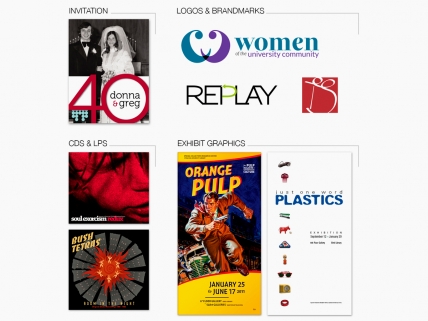Profile: Design Workshops with Penelope Singer
Light Work Lab is pleased to present our Instructor Profile series – featuring interviews with our workshop and class instructors. We want you to get to know them, their work and their interests.
Today we interview Penelope Singer who teaches both an Intro and Advanced Graphic Design class as well as a File Preparation workshop.
Penelope Singer is a graphic designer, jeweler, and instructor who lives in Central New York. For her, making things is like breathing—she’s been doing both for as long as she can remember. Both her jewelry and photography have been shown in the Everson Museum of Art. She currently works as graphic designer for the Syracuse University Libraries, teaches workshops on design programs and topics at Light Work, and creates art jewelry in her home studio.
LWL: What do you love about graphic design?
I love that graphic design can completely change the message and meaning of something. It has the power to influence how we think, what we buy and how much we’ll pay for it—even whether or not we trust our doctor.
Graphic design is non-verbal communication for words. It’s the body language, dress, style, and tone. It’s the smile or the tapping foot. It’s the character behind the message.
When you’re designing something, it’s like you’re giving someone a makeover. You’re given raw materials to work with and you have to delve in and understand the why—who is that person, what are their hopes and dreams, what do they stand for—and once you know that, you figure out what will make those things shine.
Graphic design is not just about making something look good—it’s about creating something that communicates effectively. Good design doesn’t call attention to itself; it calls attention to its content. It puts the focus on the message. That’s why design skills are so crucial—they give you more control over how your message is received.
I guess you could say that I love graphic design because I am a control freak.
LWL: Tell us about the file preparation workshop, where did you get the idea for it?
For years I’ve seen people struggle with the concept of pixels and file formats. I’ve seen people print out things and wonder why they look so bad when they “looked fine on my monitor.” The concept of pixels and digital image files isn’t easy. Pixels aren’t tangible; they’re not bound to a physical size. File formats are just as tricky. We can’t always see the difference between a JPG and a TIF unless we know what we’re looking at. The problem is that the world is starting to require that we understand these intangible things in order to thrive in any field.
I consistently see artists not submitting their artwork to exhibits and publications because they aren’t sure how to get images of their work into the appropriate size and file format that’s required. But it was one particular incident last year that birthed the idea for this workshop:
I’d seen a call for entries and was trying to get my friend and fellow jeweler Dana to enter a few of her pieces for publication in the newest Lark book “500 Necklaces.” I knew her work was good, and I knew she had lovely pictures of them already. When I told her, she seemed excited about it. A couple of weeks later I was working in the studio and realized that the deadline was the next day, so I called her up to see if she’d entered anything. I was probably procrastinating on finishing a project that evening. When I talked to her she sheepishly admitted she hadn’t submitted anything because she wasn’t sure if her image files were the right size and she didn’t know how to go about figuring it out. I told her, “Send me the files and I’ll get them all set for you. I want someone I know in that book.” There were just a few hours left, but she was able to get them submitted. A few months later she called me up excitedly. The book editors had contacted her and asked her more questions about her work! A few weeks later she found out she’d made it into the book. She still owes me lunch for that.
I see artists all the time making great work, but when they put it out in the digital world, it suffers—or it doesn’t get out there at all. Maybe it’s selfish, but I want to see more good art out in the world. That and less crappy JPGs.
LWL: Who should take your classes?
I think everyone should take my classes. At the very least I’m an amusing person—and I’m okay at being laughed at.
People who’ll get the most from my classes, however, are ones who are curious about the process. They want to get their hands in there and get dirty. Well, not literally dirty, but you know what I mean. They want to make something—and make it better than they have in the past.
I especially encourage all artists who know only limited information about digital image files to take the File Prep class. Knowing how to get the right size and format file—that looks as good as the original, ginormous one—is crucial in getting noticed. You can have beautiful work and a photograph of that work, but if it’s not a good quality image file, you’re limiting your chances of success.
Introduction to Graphic and Layout Design
March 10 – March 31, 2014 / Mondays, 6-9pm
Skill level: Beginner / Intermediate
Professional Practice: Preparing Files
April 6, 2014 / Sunday 1-4pm
Skill level: Beginner
Advanced Graphic and Layout Design
April 28 – May 19, 2014 / Mondays, 6-9pm
Skill level: Intermediate / Advanced
Register for Penelope’s class at www.lightwork.org/workshops




Leave a Reply
Want to join the discussion?Feel free to contribute!